While studying dynamics in the 3D Leonardo grid constructions I also discovered an interesting new way of translating 2D Leonardo grids into dynamic structures. Looking again at the basic grids you will realize that there are two possible interpretations: you can either look at it as a construction built out of rods or as a tiling, a pattern built with a set of tiles. The dividing lines then form the Leonardo grid.
One line in this grid represents the edges of 4 tiles: 2 big tiles and 2 small tiles. So this one gridline can be seen as a set of 4 edges. And because the edges are alternating long-short-long-short, the set of edges can be seen as a collapsed parallelogram. In the original grid the tiles are close to each other so the described has area zero. But what will happen when we 'open' the parallelogram? The set of tiles then turn out to be a dynamic hinged construction. The Leonardo grid lines transform from line to parallelogram to rectangle and back via parallelogram to Leonardo grid line again. And as a result of this process is that a left-hand orientation of the Leonardo grid has changed into a right-hand orientation.
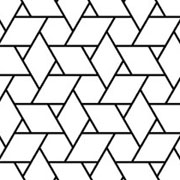


Figure 42: Transformation first stage
Figure 43: Second stage
Figure 44: Third stage
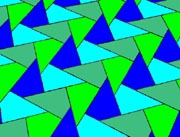
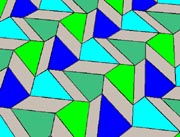
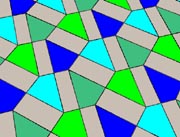
Figure 45: Transformation first stage
Figure 46: Second stage
Figure 47: Third stage
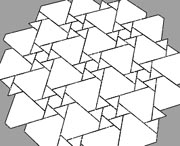
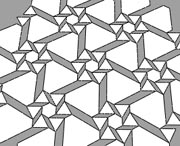
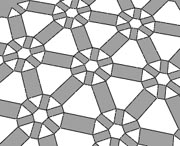
Figure 48: Transformation first stage
Figure 49: Second stage
Figure 50: Third stage